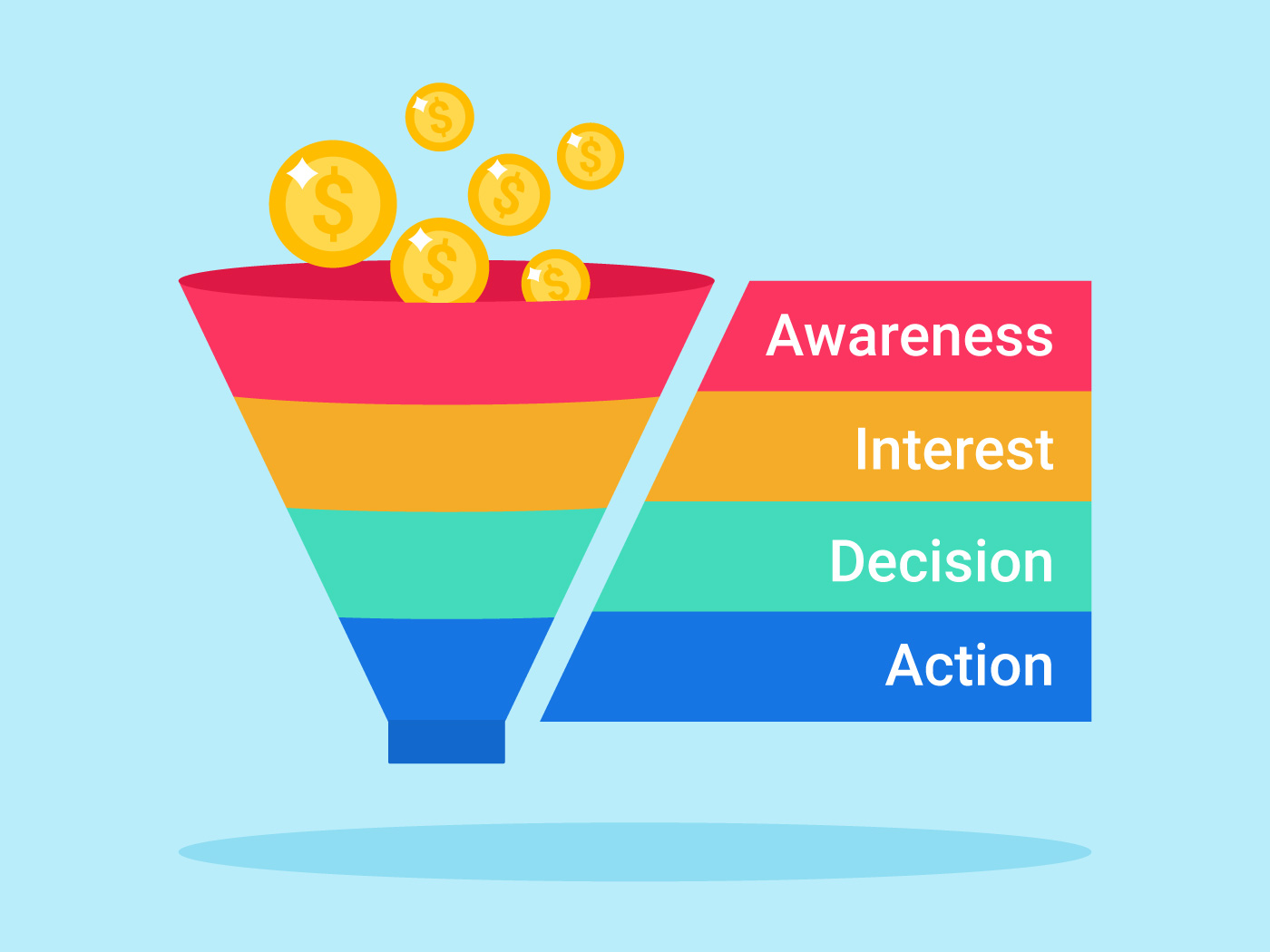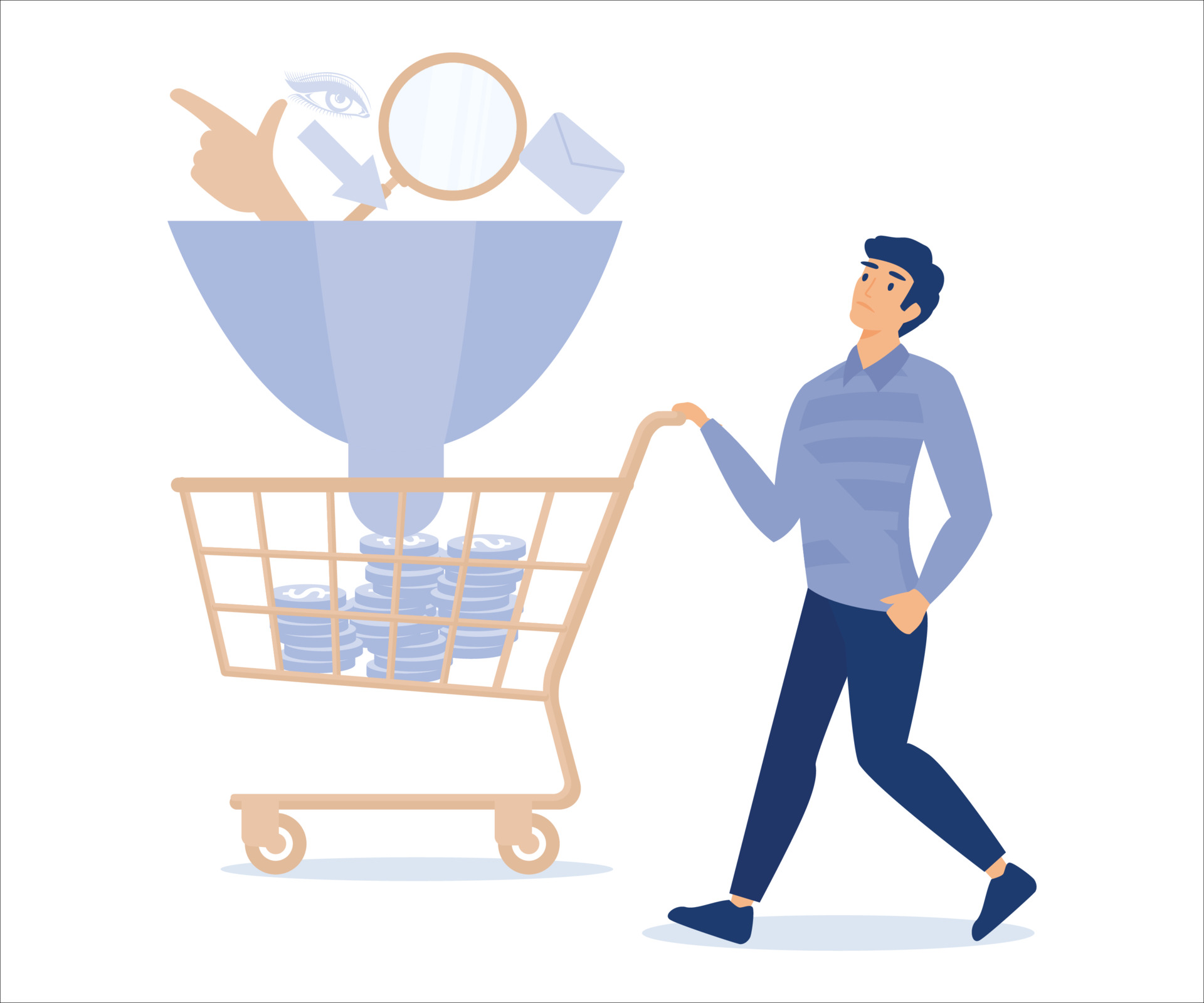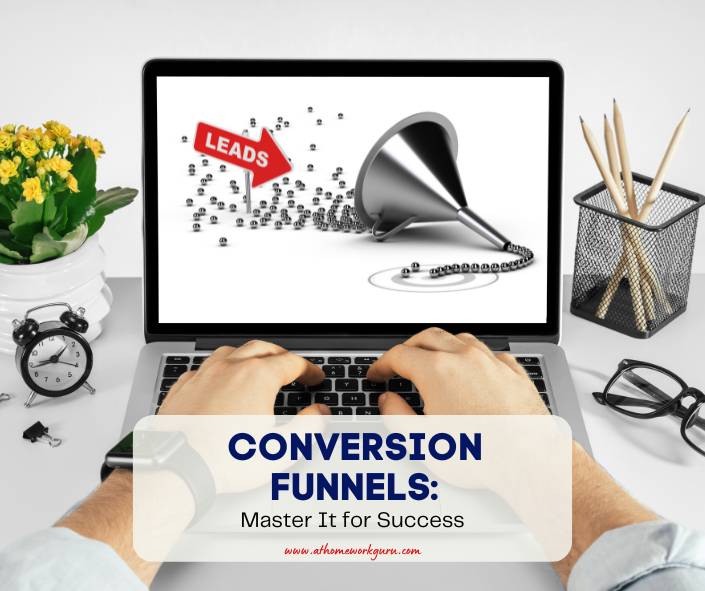==================
A Caveat and Affiliates
First off, a little caveat: within my articles you will find affiliate links, meaning if you buy them, I get a small commission. Your cost is not affected. In addition, I am an Amazon Associate and I earn from qualifying purchases on Amazon.
And yes, if I say that I recommend a product here, it means I truly believe it is a good product. I refuse to recommend any product that I have not researched and believe to be a good value.
Even better, I provide you with a very clear picture of the product, it’s use, and the probable value.
Earning your trust is important to me. I run this website myself and the commissions and donations help support the site.
Sound reasonable and fair enough? Let’s continue to the article.
==================
Hello, friends! Are you ready to learn about conversion funnels? Great! They are super important if you want to turn website visitors into customers. In this article, we’ll help you create the best conversion funnel for your online business.
Contents
Your Ultimate Guide to Conversion Funnels
So, what is a conversion funnel? It’s the steps a person takes on your website, from visiting it to buying something. A good conversion funnel makes it easy for people to buy from you. And when people enjoy using your website, they are more likely to spend money!

You might be thinking, “How do I create a website conversion funnel?” Don’t worry; we’re here to help. We’ll teach you all about conversion funnels, and how to make one that works really well. We’ll talk about the different parts of a funnel and give you tips for each step. Plus, we’ll even show you some important things to keep track of. So, let’s get started together!
Our main goal is to help you understand conversion funnels. We’ll help you learn how to create a website conversion funnel that’s easy and fun to use. We’ll explain everything in a simple way, so everyone – even kids – can follow along and learn. So, let’s jump in and start exploring conversion funnels!
What is Conversion Funnels?
Let’s start by understanding what conversion funnels are. Imagine a funnel – it’s wide at the top and narrow at the bottom, right? Conversion funnels are like real funnels. They help guide people from the moment they first visit your website to the point where they become customers. The main goal is to make it easy for people to find what they need. Also, it will help you learn about your products or services and eventually make a purchase.
Components of a Conversion Funnel
Now, let’s look at the main parts of a conversion funnel. Each website might have a slightly different funnel. But, there are some key components that are usually present:

1. Awareness
This is when people first discover your website. They might find you through search engines, social media, or even word of mouth. At this stage, it’s important to catch their attention and make them want to learn more about what you offer.
2. Interest
Once visitors are on your website, you need to keep them engaged. This can be done by creating interesting content, like blog posts or videos. This helps them learn more about your products or services.
3. Desire/ Decision
After learning about your offerings, your visitors should start to want your product. This can happen if you present your products or services well. It should highlight their benefits and how they can solve problems or make life better.
4. Action
Finally, it’s time for your visitors to take action. These include signing up for a newsletter or requesting more information. And they might even make a purchase. This is the end goal of your conversion funnel, and it’s where you turn visitors into customers.
Stages of a Typical Conversion Funnel
Now we know the main components of a conversion funnel. So let’s explore the different stages. Remember, each business might have a unique funnel, but here’s a general outline of the stages:
1. Top of the Funnel (ToFu)
This is the awareness stage, where you attract potential customers to your website. At this point, they might not know much about your business or what you offer. So your main goal is to get their attention and make them curious.
2. Middle of the Funnel (MoFu)
During the interest and desire stages, you need to keep your visitors engaged. Plus, you need to help them learn more about your products or services. This can include things like blog posts, videos, or interactive tools. So you’ll be able to educate and entertain.
3. Bottom of the Funnel (BoFu)
In the action stage, you want to make it as easy as pie for visitors to take the final step and become customers. This might involve creating clear calls to action. Offering special deals or incentives is also another. You can also provide a seamless checkout process. Understanding these stages and components of conversion funnels will help you. So you can create a website conversion funnel that guides your visitors smoothly. This will result in more sales and happier customers!
How to Create a Website Conversion Funnel

1. Define your goals and objectives
Alright! Let’s start by talking about your goals. What would you like visitors to do on your website? Maybe buy something or sign up for a newsletter? Knowing your goals helps you create a conversion funnel. This will guide people toward taking those actions.
2. Identify your target audience
Now let’s think about your target audience. Who’s going to be most interested in your products or services? Take into account their age, location, and interests. This way, you’ll be able to create content and design elements that really speak to them.
3. Create compelling content and design for each stage
With your goals and audience in mind, it’s time to produce content for each stage of your conversion funnel. These stages include awareness, interest, desire, and action. For every stage, whip up content that keeps visitors engaged and nudges them closer to your goals. This could be blog posts, videos, or even product descriptions. Just make sure it’s captivating and easy to grasp.
4. Implement lead generation strategies
To bring more people to your website, try some lead-generation strategies. You can use search engine optimization (SEO) and social media ads. Or you can even collaborate with influencers. The more people you draw in, the more potential customers you’ll have.
Let’s make your website a breeze to use. Aim for a clean design, snappy loading times, and clear calls-to-action (CTAs). Don’t forget to ensure it works well on smartphones too. A user-friendly website helps visitors glide through your conversion funnel. I’m sure they’ll become happy customers.
By following these tips, you’ll be on your way to creating a website conversion funnel. It’ll transform visitors into loyal customers. Just remember to stay focused on your target audience and your goals. You’ll soon see your online sales take off!
Analyzing and Optimizing
Ready to make your conversion funnels even better? Let’s learn how to analyze and optimize them for the best results!

1. Monitor your funnel’s performance
Keep a close eye on your conversion funnels. Track important numbers. These include conversion rates, bounce rates, and time spent on your site. This way, you’ll see which parts are working well and which need improvement. Regular checks also help you spot trends and make smart decisions.
2. Identify areas for improvement
After checking your funnel’s performance, you might find some areas needing a boost. It could be a high bounce rate on a certain page or low engagement with calls to action. Note these areas. And get ready to make improvements to increase your conversion rates.
3. Test different strategies
Be open to trying new things when optimizing your conversion funnels. Experiment with different headlines, images, or website layouts. Remember, make one change at a time and measure the results. This way, you’ll know what works and what doesn’t.
4. Use A/B testing
A/B testing is a great method for finding the most effective changes. Make two versions of a page (Version A and Version B) and compare their performance. The one with the better results is the winner! Keep testing and refining to create the best-converting funnel.
5. Continuously optimize
Optimizing your conversion funnels isn’t a one-time job. It’s an ongoing process that needs regular attention. Stay focused by checking your funnel’s performance. Test new strategies, and make needed improvements. This ongoing effort will keep your funnel in great shape. And it will help it convert visitors into loyal customers.
6. Get feedback from users
Don’t forget to ask for feedback from your website visitors. They can give you valuable insights into their experience with your conversion funnels. Use surveys, feedback forms, or user testing. So you’ll understand what your audience likes and dislikes. This feedback can help you make changes that lead to higher conversions.
Just follow these steps. You’ll make sure your conversion funnels turn website visitors into happy customers. Embrace experimenting, testing, and tweaking to create a powerful, high-converting funnel. It will help your online business grow and succeed!
Tips for Effective Conversion Funnels
Want to make your conversion funnels even better? Here are some simple tips that even kids can understand!
![]()
1. Make it easy to use
Make sure your website is easy to use and understand. Keep things simple and clear. This way, people can find what they’re looking for without any trouble.
2. Show what people like
Give users content that’s just right for them. This makes them more likely to stay on your website and take action. Use tools that help you learn about your visitors so you can show them the things they like.
3. Use the power of friends
People trust their friends’ opinions. Show them that others like your product or service. You can share social media posts, customer reviews, or famous people’s recommendations.
4. Tell them why you’re special
Explain why your product or service is great and how it can help them. Use simple words and pictures to show what makes you different from others.
5. Make your landing pages better
Landing pages are important in your funnel. Test different things like titles, pictures, and buttons to see what works best. Use tools that help you learn about how people use your landing pages.
6. Answer their questions
Think about questions or worries your users might have. Give them answers or solutions. You can create a list of questions and answers, offer a money-back promise, or let them try your product for free.
7. Keep the checkout fast and easy
A long or hard checkout process can make people leave. Make it quick and simple for users to buy your product or service. Offer a fast checkout option. Ask for only the needed information, and show that their information is safe.
Keep things clear and easy to read, and your conversion funnels will be super effective!
Wrapping Up Our Conversion Funnels Journey
Wow! We’ve learned so much about conversion funnels. That’s not all. You discovered how to create a website conversion funnel. Now, you should know what they are and why they’re super important for your online business.
Don’t forget. The secret to a winning conversion funnel is knowing who your audience is. Also, making fun content that helps them at every stage is as important. Keep an eye on your funnels and make them better and better, so they work their best. Try different ideas and always look for ways to make things even better. So, it’s time to use all these tips! With hard work and some creativity, you’ll make awesome and high-converting funnels. These will help your online business grow big and strong. Good luck, and have a blast making those funnels work!
FAQs
What's a conversion funnel?
A conversion funnel is the path people take on your website before they become customers. It has different steps, from finding your site to buying something or signing up.
How do I make a conversion funnel for my website?
To make a conversion funnel, first, figure out your goals. Next, find out who your audience is and make interesting content for each step. Add ways to get leads and make your site easy to use and navigate.
How do I make a conversion funnel for my website?
To make a conversion funnel, first, figure out your goals. Next, find out who your audience is and make interesting content for each step. Add ways to get leads and make your site easy to use and navigate.
Why should I care about conversion funnels?
Conversion funnels help you see how people use your website. They show you what needs fixing and how to get more visitors to become customers. This can make you more money in the end.
How do I check how well my conversion funnel is doing?
Keep an eye on important numbers, like how many people buy something, leave your site, and how long they stay. This helps you see what’s working and what needs to be fixed.
What's A/B testing, and how can it make my conversion funnel better?
A/B testing lets you try out two different versions of a webpage to see which one works best. It helps you know what changes to make for more people to buy things or sign up.
What's A/B testing, and how can it make my conversion funnel better?
A/B testing lets you try out two different versions of a webpage to see which one works best. It helps you know what changes to make for more people to buy things or sign up.
Can I keep making my conversion funnels better over time?
Yes! You should always be working on making your conversion funnels better. Look at how well they’re doing, try new ideas, and fix any problems. This keeps your funnel working great.
How can I find out what people think of my website?
You can use things like surveys or feedback forms to ask people what they think. This can help you learn what they like and don’t like, so you can make your website better and get more customers.
Read More
Other Interesting Reads:
E-commerce Conversion Funnel: Stages + Testing Ideas (Bigcommerce.com)



